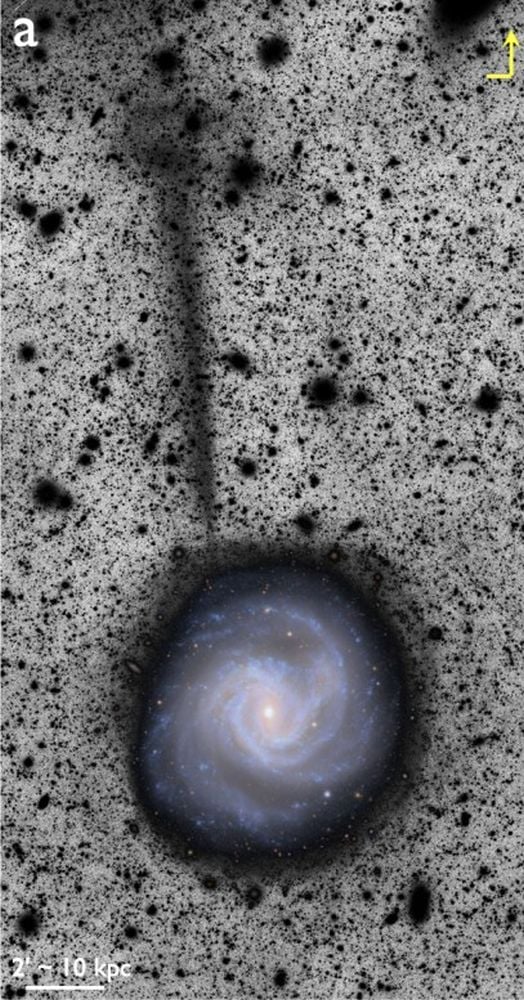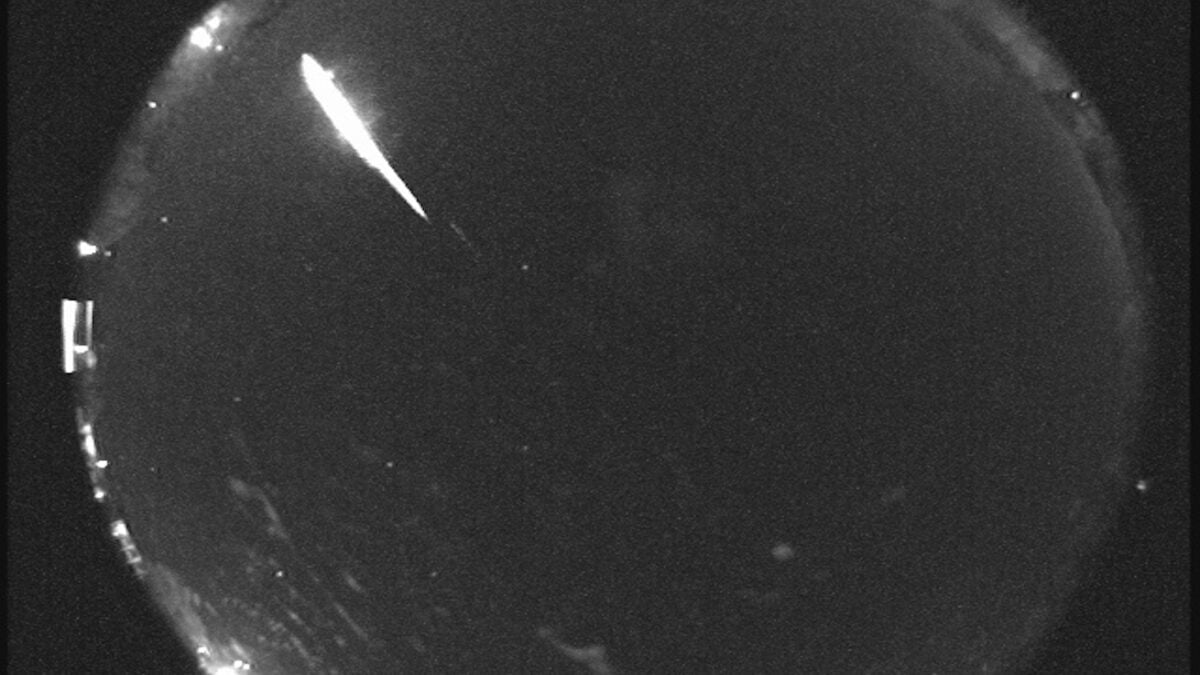The Vera Rubin Observatory (VRO) hasn’t yet begun it’s much-anticipated Legacy Survey of Space and Time. But it saw its first light in June 2025, when it captured its Virgo First Look images as part of commisioning its main camera. Those images are a sample of how the observatory will perform the LSST and feature the Virgo Cluster of galaxies.
While the galaxies in the Virgo Cluster have been well-studied, the powerful VRO has revealed new, previously unseen details. Astronomer have detected an enormous stellar stream emanating from one of the cluster’s galaxies, Messier 61 (NGC 4303.)
The discovery is in a new research letter titled “A stellar stream around the spiral galaxy Messier 61 in Rubin First Look imaging.” It’ll be published in the Research Notes of the American Astronomical Society, and the lead author is Aaron Romanowsky from the Department of Physics & Astronomy at San Jose State University.
The authors explain that among all the new detail revealed in the VRO images, a new stellar stream stands out. “One dramatic novelty is a long, narrow stellar stream extending Northward from the MW-like galaxy M61,” they write.
These types of streams are usually the remnants of a dwarf galaxy or a globular cluster that’s been torn apart by the larger galaxy’s tidal forces. The orbit stretches the stars into a stream. There are many known streams in the Milky Way, and they’re mostly tens of thousands of light years in length. But the newly-discovered stream at M61 dwarfs those ones: it’s about 163,000 light years long.
“Giant spiral galaxies like the Milky Way (MW) constantly accrete dwarf galaxies that disrupt into stellar streams, as hallmarks of the hierarchical universe, useful for testing galaxy formation and dark matter theories,” the authors write in the research letter. M61 is giant spiral just like the MW, and the stream could come from the same disruption that caused a starburst in its nucleus about 10 million years ago.
In fact, the stream’s progenitor galaxy could be responsible for more than just the stream. It may have shaped M61 in more fundamental ways. “Given an infall halo mass of ∼ 8 × 1010M⊙ expected from its stellar mass, the stream progenitor galaxy could be responsible for the bar formation, starburst, and active galactic nucleus in M61, reminiscent of the Sgr impact on the MW,” the authors write.
The Sgr they’re referring to is the stellar stream from the Sagittarius Dwarf Spheroidal Galaxy. It’s a satellite of the Milky Way that follows a polar orbit around the MW. It’s passed through the MW’s plane multiple times, and data from the ESA’s Gaia shows that the interactions triggered massive star formation episodes in the MW.
The stream also has a complex end plume that awaits more detailed study. It’s about 9 x 4 kpc, or about 30,000 by 13,000 light years.
The stream from M61 terminates in a plume with a complex structure. Image Credit: Romanowsky et al. 2025, RNAAS.
Many of us have been waiting for the Vera Rubin Observatory to begin observations, and this discovery of the new stellar stream in a much-observed galaxy is just adding more excitement. Who knows what else is hiding in plain sight, waiting to be revealed by the new observatory?
“It is remarkable that the stream went long unnoticed around a Messier galaxy,” the authors conclude. “We expect a treasure trove of substructures to be unveiled around other galaxies with future Rubin data.”
Here you’ll find an interactive version of some early imagery from the VRO.
First Appeared on
Source link













